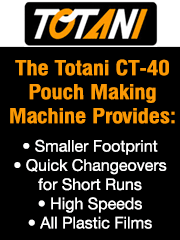The Third Wave: An Iron Tale about the Business of Print, Vol. 7
- Published: July 01, 2002, By Susan Kelly, Raine Consulting Inc.
This column is the seventh in a year-long series of columns about the challenges facing the converting industry. Through our 2002 series of web articles, Raine provides critical insights, specific industry examples, and thought-provoking ideas about how technology is impacting converters today.
New Job Description for CEOs
Company leaders and CEOs (chief executive officers) are being asked the impossible: meet top line, bottom line, and margin expectations. So how does a CEO get control especially in these tough and unpredictable economic times? How can they create vision, drive sustainable performance, and grow their companies profitably?
If the CEO has to prioritize his or her time in 2002 according to those activities that will make the most impact on profits in the short-term, we believe the focus should be on customers and technology. Why? A customer focus will stabilize the cash flow needs for the company. A technology focus will prioritize how to best spend investment dollars. And a focus on both provides a broadened perspective that can re-energize a company’s vision for the long-term.
To find and keep customers, company leaders will have to play a bigger role in managing relationships and championing technology solutions. Companies can no longer rely solely on the sales force or marketing departments to collect, translate, and prioritize all the customer information needed to make mission-critical decisions. Investments are far too risky and resources far too scarce without a high-level understanding for commitment and approval.
So how does a CEO of a converting company re-gear their priorities for 2002 and beyond?
- Step 1: Do Your Homework
The first step for CEOs to boost sales is to understand the new buyers of converting products. They must be focused on their best customers (in most cases, Pareto Law still holds true: the tenent that 20% of your customers contribute 80% of your profits). CEOs need to know how they buy (e.g. e-procurement) and the trends impacting their customers as well as their own business. Most of all, CEOs will need to cultivate enduring relationships and act as the ‘glue’ when disruptive shifts occur. Maintaining continuity both inside and outside the organization will be critical. - Step 2: Classify Customers
Customer classification is a great way to create short-cut sales and investment strategies individualized for each customer. Where a converter is positioned inside a customer’s organization will determine the converter’s "span of control" in customer relationships. How well a converter is established in the customer’s organization will determine the company's ability to retain, maintain, or grow sales.
Here are some examples of questions, CEOs can ask to help classify customers:
Are they a strategic customer versus cash flow customer?
Cash-flow customers are great, but strategic customers are even better. Strategic customers provide good cash flow and other valuable benefits. For example, a strategic customer is one who invests in a supplier relationship and understands the switching costs when changing suppliers solely based on price. A converter is more likely to invest in a strategic customer than a cash-flow customer.Can you "drive" customer needs versus following a "sit and wait" strategy?
It’s time to be honest with each of your customers as to who drives the relationship. If the converter is truly in the driver’s seat, then it is incumbent on the converter to invest in new solutions continuously in order to retain and maintain the customer relationship. - Step 3: Develop Unique Customer Strategies
Customers definitely are like snowflakes: Each one is unique. Your best customers deserve unique customer strategies. Information from steps 1 and 2 provide a good start, and mapping the value relationship you have with your best customers can quickly ascertain the boundaries of future technology investments on a customer by customer basis.
This article is excerpted from the Raine white paper The Third Wave: An Iron Tale about the Business of Print, downloadable free of charge from RaineConsulting.com.













